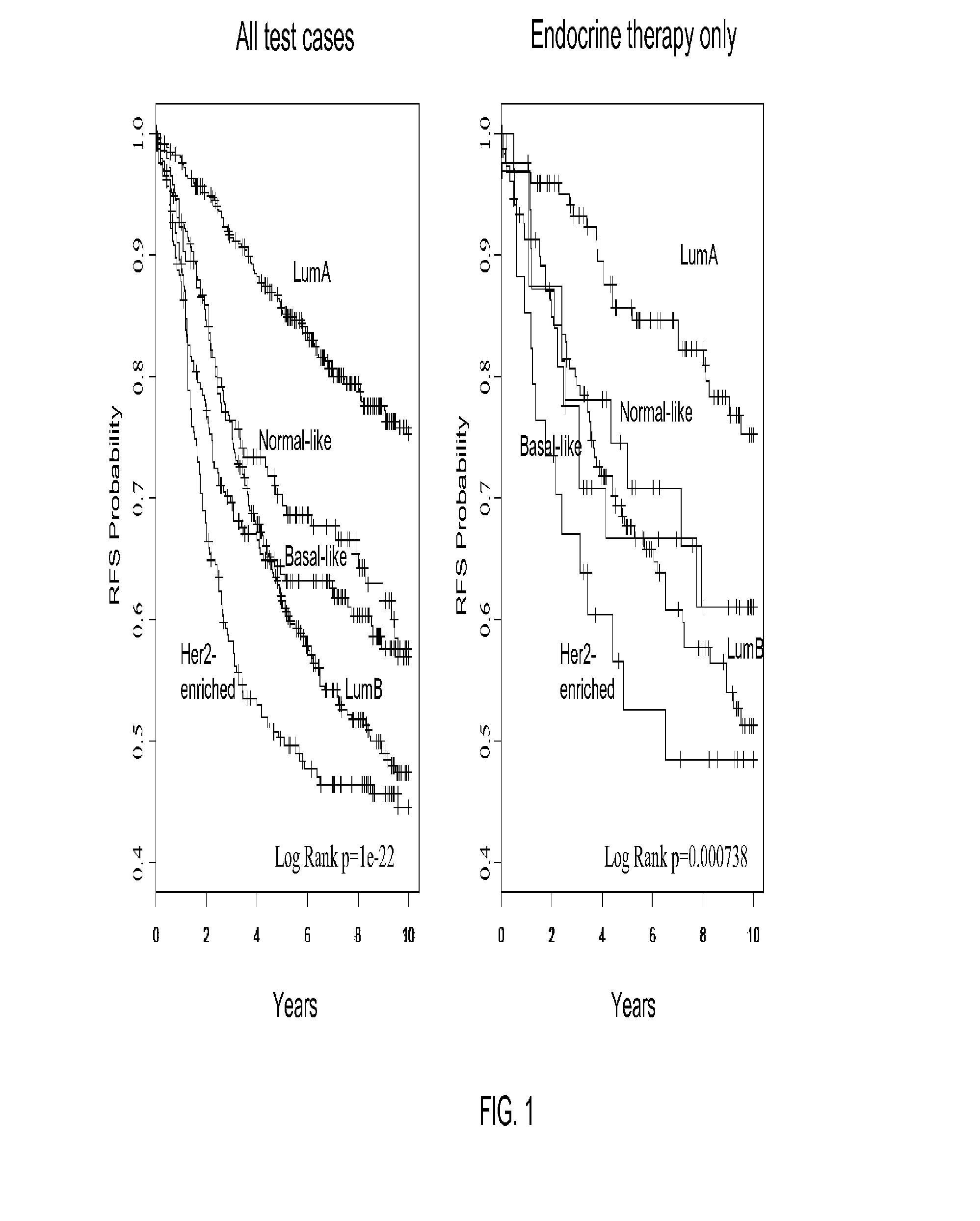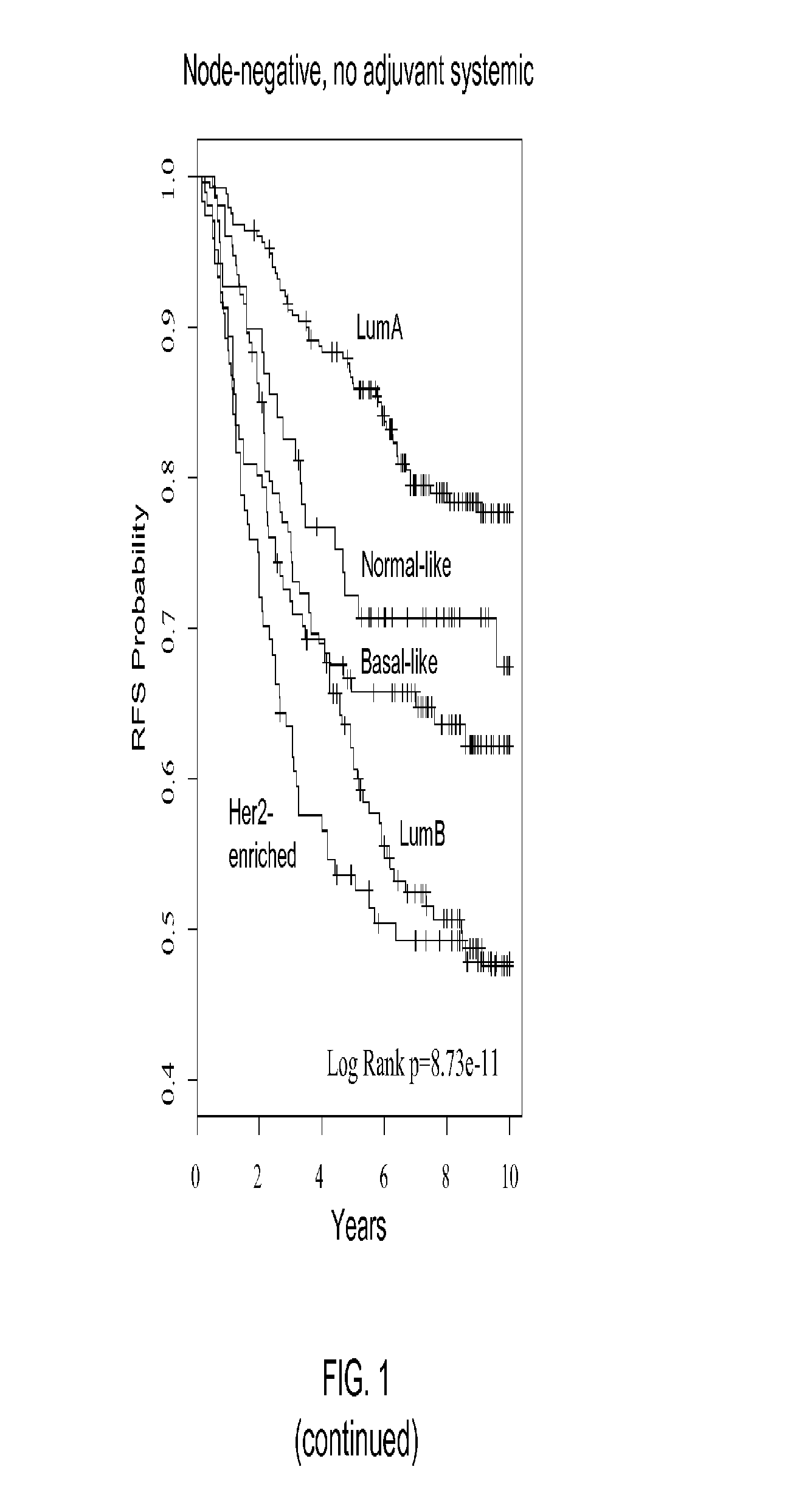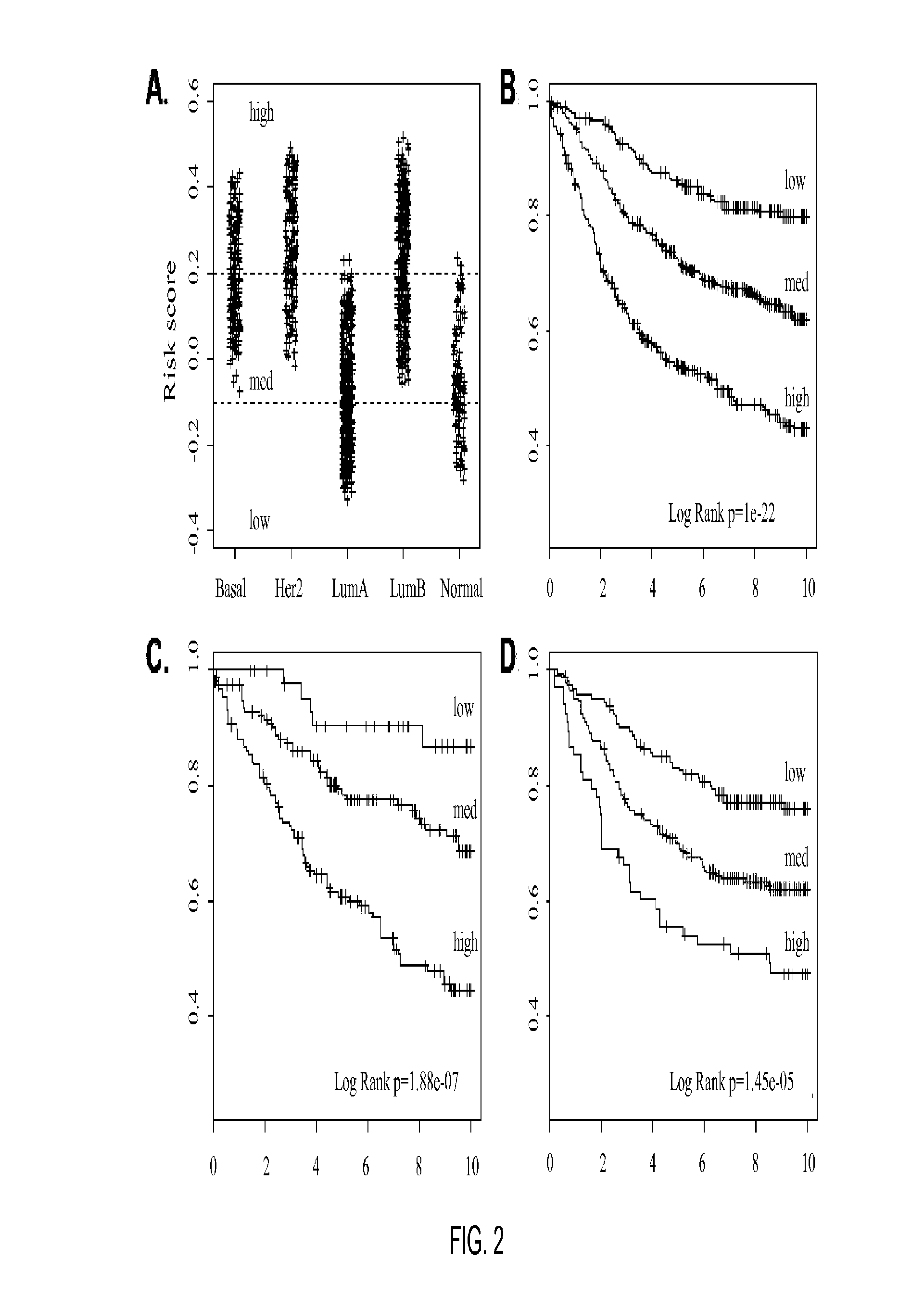Gene expression profiles to predict breast cancer outcomes
a gene expression and breast cancer technology, applied in the field of gene expression profiles to predict breast cancer outcomes, can solve the problems of poor ten-year outcome of approximately 20% of women diagnosed with early-stage breast cancer, disease recurrence, metastasis or death, etc., and achieve the effect of accurately predicting the intrinsic subtype of a subject and evaluating the prognosis and treatmen
- Summary
- Abstract
- Description
- Claims
- Application Information
AI Technical Summary
Benefits of technology
Problems solved by technology
Method used
Image
Examples
example 1
Methods
Samples and Clinical Data:
[0078]Patient cohorts for traiing and test sets consisted of samples with data already in the public domain (Loi et al. (2007) J. Clin. Oncol. 25:1239-1246; va de Vijver et al. (2002) N Engl J Med 247:1999-2009; Wang et al (2005) Lancet 365:671-679; Ishvina et al. (2006) Cancer Res 66:10292-10301; and Hess et al (2006) J Clin Oncol 24:4236-4244, each of which is incorporated by reference in its entirety) and fresh frozen and formalin-fixed paraffin-embedded (FFPE) tissues collected under institutional review board-approved protocols at the respective institutions.
[0079]A training set of 189 breast tumor samples and 29 normal samples was procured as fresh frozen and FFPE tissues under approved IRB protocols at the University of North Carolina at Chapel Hill, The University of Utah, Thomas Jefferson University, and Washington University. The training set, which was gene expression profiled by microarray and qRT-PCR, had a median follow-up of 49 months ...
example 2
Introduction and Background Data
[0128]This technology also covers the use of the PAM50-based intrinsic subtype classifier as a predictive and prognostic signature in the neoadjuvant endocrine therapy setting. Postmenopausal patients with Stage 2 and 3 ER and / or PgR positive breast cancer can be treated with an endocrine agent, typically an aromatase inhibitor or tamoxifen, before surgery to improve clinical outcomes, i.e. to promote the use of breast conserving surgery or to improve operability in the setting of a tumor that has invaded into the tissues surrounding the breast. A predictive test to increase the confidence that an individual patient will respond to neoadjuvant endocrine therapy is a significant advance.
Summary
[0129]The PAM50 based intrinsic subtype and proliferation-weighted risk score, when applied to samples from ER+breast cancers harvested after initiating treatment with an endocrine agent, can be used to predict response to neoadjuvant endocrine therapy and determ...
example 3
[0136]A risk of relapse analysis was performed on the samples described in Example 1, except the normal-like class was removed from the model. The normal-like class was represented using true “normals” from reduction mammoplasty or grossly uninvolved tissue. Thus, this class has been removed from the all outcome analyses and this classification is considered as a quality-control measure. Methods not described below are identical to the methods described in Example 1.
Methods
Prognostic and Predictive Models Using Clinical and Molecular Subtype Data:
[0137]Univariate and multivariate analyses were used to determine the significance of the intrinsic substypes (LumA, LumB, HER2-enriched, and basal-like) in untreated patients and in patients receiving neoadjuvant chemotherapy. For prognosis, subtypes were compared with standard clinical variables (T, N, ER status, and histological grade), with time to relapse (i.e., any event) as the end point. Subtypes were compared with grade and molecul...
PUM
| Property | Measurement | Unit |
|---|---|---|
| Time | aaaaa | aaaaa |
| Size | aaaaa | aaaaa |
| Fraction | aaaaa | aaaaa |
Abstract
Description
Claims
Application Information
 Login to View More
Login to View More - R&D
- Intellectual Property
- Life Sciences
- Materials
- Tech Scout
- Unparalleled Data Quality
- Higher Quality Content
- 60% Fewer Hallucinations
Browse by: Latest US Patents, China's latest patents, Technical Efficacy Thesaurus, Application Domain, Technology Topic, Popular Technical Reports.
© 2025 PatSnap. All rights reserved.Legal|Privacy policy|Modern Slavery Act Transparency Statement|Sitemap|About US| Contact US: help@patsnap.com



